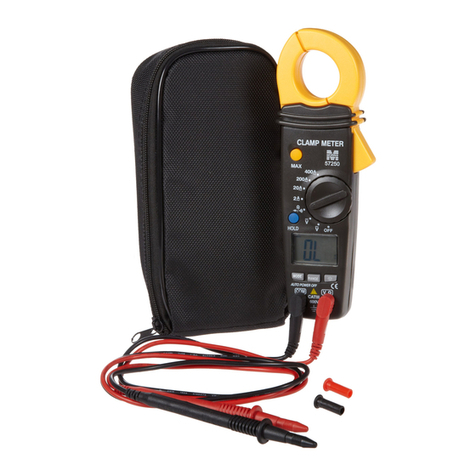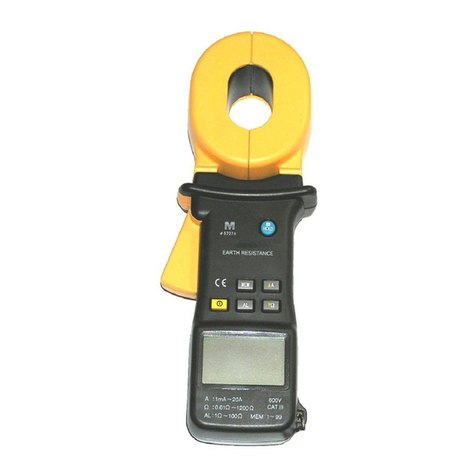
the circuit under test has all power removed
and that all capacitors have been discharged
CONTINUITY TESTING
1.
2.
3.
4.
Insert the black and red test leads into the
COM and V
Hz input terminals respectively.
Set rotary switch at desired
position.
Push FUNC. button to select .
Connect the test lead tips in parallel with the
resistance in the circuit being measured. If
continuity exists (i.e., resistance less than
40
Ω
) built – in buzzer will sound.
DIODE TESTING
1.
2.
3.
4.
Insert the black and red test leads into the
COM and V
Hz input terminals respectively.
Set rotary switch at desired
position.
Push FUNC. button to select . The red
lead should be connected to the anode and
the black lead to the cathode of the diode.
The typical voltage drop should be about
0.6V for silicon diode or 0.3V for germanium
diode. If the diode is reverse biased or there
is an open circuit the reading displayed will
−12 −
FREQUENCY MEASUREMENT
1.
2.
3.
Insert the black and red test leads into the
COM and V
Hz input terminals respectively.
Set the rotary switch to Hz position.
Connect the test leads across the source or
load under measurement. The polarity of the
red lead connection is positive “+”.
Read the measure result from the display.
NOTE:
1.
2.
The signal amplitude must also be greater
than the sensitivity level.
Determine that the amplitude level of the
signal to be measured is not greater than the
input voltage limit (250V DC/AC rms.).
MEASURING FREQUENCY FOR CLAMP
1.
2.
3.
Set the rotary switch to position.
Press the trigger to open transformer jaw
and to clamp one conductor only, making
sure that the jaw is firmly closed around the
conductor.
Read the measure result of frequency of AC
current flowing through the transformer jaw
−13 −
































